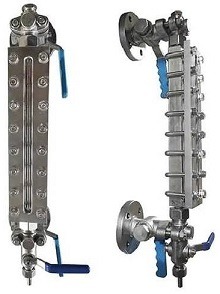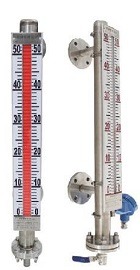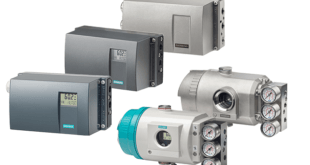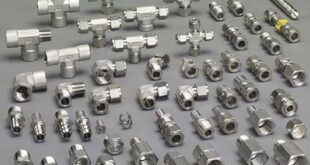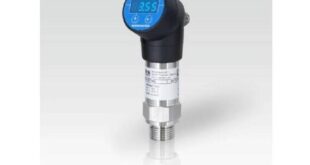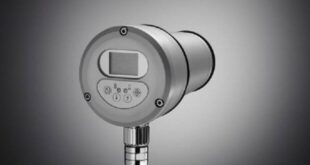What is a level gauge or level indicator? Applications and types
Level gauges are one of the widely used tools in the country’s industries. This article talks about this important equipment.
What is a level gauge?
Level indicators or level gauges are devices that are used to measure the level of fluids in various industrial applications. These devices are used to determine the liquid level in tanks, drums, pressure tanks, etc.
There are many level gauges to suit the needs of different activities. Typically, fluids are used in various forms in many industries. Without proper devices, it will be very difficult to find the amount and level of stored liquid. Also, in certain situations where the nature of the liquid is dangerous or the place where the liquid is stored is such that the level cannot be found manually; The use of level gauges becomes very important.
The type of level gauge should be selected depending on the type of application used. For example, in process industries, tube level gauges are used to visually indicate liquid levels. If the device is for non-contact level measurement, radar type indicators or ultrasonic type indicators should be used.
Size and general applications of level gauge
Surface measurements based on their body length measured from the top and bottom of the gauge; and view length, which represents the available length of the viewable window; is done Sight length determines the minimum and maximum level readings that can be obtained from a given level gauge. In the case of magnetic level gauges, sight length is not relevant, as the movement of the float is the determining factor in determining the size of the level gauge in terms of measuring the minimum and maximum fluid level at which the gauge operates.
Liquid level gauges can be used as drum level gauges, tank level gauges, oil level gauges or water level gauges. They can also be used as cryogenic tank level gauges for liquefied gas applications.
Types of level gauges
There are different types of level gauges, each of which has its own use.
The transparent level gauge is very useful in the chemical and petrochemical industries. Since the fluid is stored at high pressure and high temperature, the transparent level gauge is very useful for finding the fluid level.
Reflex level gauges are a type of level gauge for applications that include high temperature, high pressure and the use of corrosive fluids. The colorless fluid used in this device gives better clarity to the surface display.
Magnetic level gauges have red followers that require magnetic level indicators. In this type, cylindrical floats and powerful magnets are used to find the fluid level. The movement of the float is followed by magnetic capsules, and thus, the surface is indicated in it. This type shows good visibility and is completely safe to use; Because it contains a non-fragile metal housing.
In the following, more complete points are given in relation to each of these level gauges.
1- Transparent Level Gauge
Apart from glass tube level gauges, clear level gauges always have two clear glass plates with the liquid between them. The fluid level is shown as a result of the different transparency of the two environments.
Applications of transparent level gauge
Transparent level gauges are suitable for almost all installations. Among their uses, the following can be mentioned.
- Use of mica protectors or PCTFE protectors to protect the glass from the corrosive action of the process fluid.
- View interface
- Observe the color of the liquid
The instrument consists of a metal body that is machined to have an internal chamber and one or more layers of faceplates (on each side of the gauge). On each frame, a special high-strength transparent plate glass is applied with a sealed connection and a metal cover plate by bolts and nuts.
The housing is connected to the container with cross connections and flanged, threaded or welded ends. Usually, valves are installed between the instrument and its connecting end so that the pipes can be disconnected and connected and the level gauge can be removed without emptying the container. Drain valves can also be fitted to a cross fitting device.
To prevent leakage in the event of glass breakage, the safety check wing device can be used in cross-connections or shut-off valves. This type of indicator is suitable for water/steam. To protect glass surfaces from process fluid corrosion, clear gauges can be fitted with mica shields or PCTFE shields. This type of indicator is suitable for colorless and very fluid liquids.
2- Reflex Level Gauge
The working principle of the reflex level gauge is based on the laws of refraction and reflection of light. Reflex glass level gauges use glass that is mounted on the housing side to have prismatic grooves with a 90 degree cross-section angle. During operation, the chamber is filled with liquid in the lower area and gases with vapors in the upper area. The liquid surface is distinguished by the different brightness of the glass in the liquid and in the gas/vapor region. Reflex level gauges do not need special light and ambient light is sufficient. It is only necessary to use artificial light during the night to provide the required light.
The different brightness in the two areas is obtained as follows.
Liquid area
This area looks completely dark when the gauge is working and as mentioned above.
Due to the structure, most of the ambient light rays that shine on the outer face of the glass are completely perpendicular to the face and thus are not deflected by the glass. These rays reach the glass/liquid interface with an inclination of approximately 45 degrees. Glass/liquid with critical angle is always higher than 45 degrees. Therefore, the rays entering at the critical angle (practically all the rays) are refracted inside the liquid, and since they are not reflected from the inner walls of the measurement chamber, the rays are not visible from the outside. In fact, this area appears dark and almost black to the observer.
Gas/steam zone
This area appears almost silvery to the observer.
In the case of the liquid region, the light rays reach the glass/gas and vapor interface at an angle of 45°. Since this angle is larger than the critical glass/gas-vapor angle, the rays are not refracted, but are completely reflected to turn 90°, thus reaching the nearest glass/gas-vapor interface again at an angle of 45°. Because of this, they are reflected and rotated 90 degrees to the observer, which makes the region appear bright silver.
Applications of reflex level gauge
Reflex level gauges can be used in most applications and offer many advantages in terms of low initial cost, low operating cost and easy level reading. The reflex level gauge is used in the following cases.
- When the level of separation between two liquids is to be read (interface).
- When liquid color observation is required in addition to level indicator.
- When the process fluid is high-pressure water vapor, because in this case the glass must be protected from the solvent action of the boiler water by using mica shields.
- When the process fluid is such that it can corrode the glass (e.g., high-temperature alkaline solutions or hydrofluoric acid), as mica shields or PCTFE shields must be used to protect the glass.
3- Magnetic Level Gauge
The magnetic level gauge is an instrument for reading the level indicator in any factory or operating conditions, providing maintenance free, preventive security against leakage, environmental safety, safe and trouble-free application with aggressive, polluting, toxic and flammable chemicals, optically. Gives.
The performance of the magnetic level gauge is based on some basic physical principles, which are:
1- The principle by which the liquid in communication vessels is always at the same level.
2- Archimedes’ principle according to which an object immersed in a liquid receives a buoyant force equal to the weight of the displaced liquid.
3- The principle of attraction between the north and south poles of two permanent magnets and repulsion between similar poles.
Applications of magnetic level gauge
The applications of the magnetic level gauge are very wide and include all situations where fluids are located. Some of the applications of this level gauge are given below.
- At high pressure, at low or high temperature
- At low pressure, at low or high temperature
- Chemical aggression
- Environmental pollutant
- Harmful or toxic to people’s health
- Flammable or explosive
- with the same optical characteristics of overlapping phases (interface)
Level gauge price
Since there are different types of level gauges, their prices also have many criteria and are different. To inquire about the price of the level gauge, you can contact the sales unit of our company, which specializes in supplying equipment for the oil and gas industries of the country.
 Ontrose industrial corporation Inc. Engineering and supply of industrial projects
Ontrose industrial corporation Inc. Engineering and supply of industrial projects




